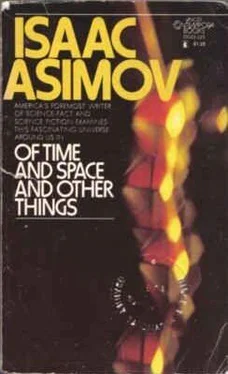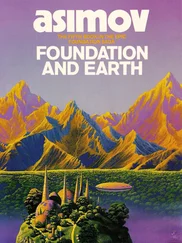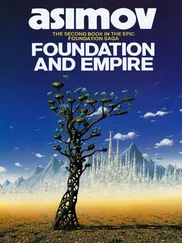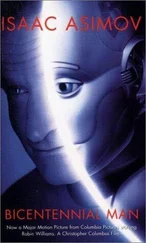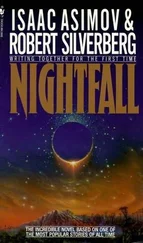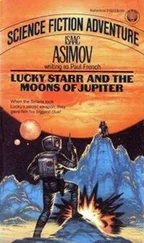Isaac Asimov - Of Time and Space and Other Things
Здесь есть возможность читать онлайн «Isaac Asimov - Of Time and Space and Other Things» весь текст электронной книги совершенно бесплатно (целиком полную версию без сокращений). В некоторых случаях можно слушать аудио, скачать через торрент в формате fb2 и присутствует краткое содержание. Год выпуска: 1972, ISBN: 1972, Издательство: Lancer Books, Жанр: Прочая научная литература, на английском языке. Описание произведения, (предисловие) а так же отзывы посетителей доступны на портале библиотеки ЛибКат.
- Название:Of Time and Space and Other Things
- Автор:
- Издательство:Lancer Books
- Жанр:
- Год:1972
- ISBN:ISBN: 0-447-33023-3
- Рейтинг книги:4 / 5. Голосов: 1
-
Избранное:Добавить в избранное
- Отзывы:
-
Ваша оценка:
- 80
- 1
- 2
- 3
- 4
- 5
Of Time and Space and Other Things: краткое содержание, описание и аннотация
Предлагаем к чтению аннотацию, описание, краткое содержание или предисловие (зависит от того, что написал сам автор книги «Of Time and Space and Other Things»). Если вы не нашли необходимую информацию о книге — напишите в комментариях, мы постараемся отыскать её.
Of Time and Space and Other Things — читать онлайн бесплатно полную книгу (весь текст) целиком
Ниже представлен текст книги, разбитый по страницам. Система сохранения места последней прочитанной страницы, позволяет с удобством читать онлайн бесплатно книгу «Of Time and Space and Other Things», без необходимости каждый раз заново искать на чём Вы остановились. Поставьте закладку, и сможете в любой момент перейти на страницу, на которой закончили чтение.
Интервал:
Закладка:
But now let's analyze this list in terms of tug-of-war values. Among the true satellites the lowest tug-of-war value is that of Deimos, 32. On the other hand, among the nine satellites listed as captured, the highest tug-of-war value is that of Nereid with an average of 34.
Let us accept this state of affairs and assume that the tug-of-war figure 30 is a reasonable mibimum for a true satellite and that any satellite with a lower figure is, in all likelihood, a captured and probably temporary member of the planet's family.
Knowing the mass of a planet and its distance from the
Sun, we can calculate the distance from the planet's center at which this tug-of-war value will be found. We can use
Equation 4 for the purpose, setting flf, equal to 30, put ting in the known values for m,, m,, and d,, and then solving for d,. That will be the maximum distance at which we can expect to find a true satellite. The only planet that can't be handled in this way is Pluto, for which the value of m, is very uncertain, but I omit Pluto cheer fully.
We can also set a minimum distance at which we can expect a true satellite; or, at least, a true satellite in the usual form. It has been calculated that if a true satellite is closer to its primary than a certain distance, tidal forces will break it up into fragments. Conversely, if fragments already exist at such a distance, they will not coalesce into a single body. This limit of distance is called the "Roche limit" and is named for the astronomer E. Roche, who worked it out in 1849. The Roche limit is a distance from a planetary center equal to 2.44 times the planet's radius.
So' sparing you the actual calculations, here are the results for the four outer planets:
Distance of True Satellite
(miles from the center of the primary)
Planet maximum minimum
(tug-of-war = 30) (Roche limit)
Neptune 3,700,000 38,000
Uranus 2,200,000 39,000
Saturn 2,700,000 87,000
Jupiter 2,700,000 106,000
As you see, each of these outer planets, with huge masses and far distant from the competing Sun, has ample room for large and complicated satellite systems within these generous limits, and the 21 true satellites all fall within them.
Saturn does possess something within Roche's limit-its ring system. The outermost edge of the ring system stretches out to a distance of 85,000 miles from the planet's center. Obviously the material in the rings could have been collected into a true satellite if it had not been so near Saturn.
The ring system is unique as far as visible planets are concerned, but of course the only planets we can see are those of our own Solar System. Even of these, the only ones we can reasonably consider in connection with satel lites (I'll explain why in a moment) are the four large ones.
Of these, Saturn has a ring system and Jupiter just barely misses one. Its innermost satellite, Amaltheia, is about 110,000 miles from the planet's center, with the
Roche limit at 106,000 miles. A few thousand miles in ward and Jupiter would have rings. I would like to make the suggestion therefore that once we reach outward to explore other stellar systems we will discover (probably to our initial amazement) that about half the large planets we find will be equipped with rings after the fashion of Saturn.
Next we can try to do the same thing for the inner planets. Since the inner planets are, one and all, much less massive than the outer ones and much closer to the com peting Sun, we might guess that the range of distances open to true satellite formation would be more limited, and we would be right. Here are the actual figures as I have calculated them.
Distance of True Satellite Planet maximum minimum
(miles from the center (tug-of-war = 30)
of the primary) (Roche limit)
Mars 15,000 5150
Earth 29,000 9600
Venus 19,000 9200
Mercury 1300 3800
Thus, you see, where each of the outer planets has a range of two million miles or more within which true satel lites could form, the situation is far more restricted for the inner planets. Mars and Venus have a permissible range of but 10,000 miles. Earth does a little better, with 20,000 miles.
Mercury is the most interesting case. The maximum dis tance at which it can expect to form a natural satellite against the overwhelming competition of the nearby Sun is well within the Roche limit. It follows from that, if my reasomng is correct, that Mercury cannot have a true satel lite, and that anything more than a possible spattering of gravel is not to be expected.
In actual truth, no satellite has been located for Mercury but, as far as I know, nobody has endeavored to present a reason for, this or treat it as anything other than an empirical fact. If any Gentle Reader, with a greater knowl edge of astronomic detail than myself, will write to tell me that I have been anticipated in this, and by whom, I Will try to take the news philosophically. At the very least, I will confine my kicking and screaming to the privacy of my study.
Venus, Earth, 'and Mars are better off than Mercury and do have a little room for true satellites beyond the Roche limit. It is not much room, however, and the chances of gathering enough material over so small a volume of space to make anything but a very tiny satellite is minute.
And, as it happens, neither Venus nor Earth has any satellite at all (barring possible minute chunks of gravel) within the indicated limits, and Mars has two small satel.Iites, one perhaps 12 miles across and the other 6, which scarcely deserve the name.
It is amazing, and very gratifying to me, to note how all this makes such delightful sense, and how well I can reason out the details of the satellite systems of the various planets. It is such a shame that one small thing remains unaccounted for; one trifling thing I have ignored so far, but WHAT IN BLAZES IS OUR OWN MOON DOING WAY OUT THERE?
It's too far out to be a true satellite of the Earth, if we go by my beautiful chain of reasoning-which is too beau tiful for me to abandon. It's too big to have been cap tured by the Earth. The chances of such a capture having been effected and the Moon then having taken up a nearly circular orbit about the Earth are too small to make such an eventuality credible.
There are theories, of course, to the effect that the
Moon was once much closer to the Earth (within my per mitted limits for a true satellite) and then gradually moved away as a result of tidal action. Well, I have an objection to that. If the Moon were a true satellite that originally had circled Earth at a distance of, say, 20,000 miles, it would almost certainly be orbiting in the plane of Earth's equator and it isn't.
But, then, if the Moon is neither a true satellite of the
Earth nor a captured one, what is it? This may surprise you, but I have an answer; and to explain what that an swer is, let's get back to my tug-of-war determinations.
There is, after all, one satellite for which I have not cal culated it, and that is our Moon. We'll do that now.
The average distance of the Moon from the Earth is 237,000 miles, and the average distance of the Moon from the Sun is 93,000,000 miles. The ratio of the Moon-Sun distance to the Moon-Earth distance is 392. Squaring that gives us 154,000. The ratio of the mass of the Earth to that of the Sun was given earlier in the chapter and is 0.0000030. Multiplying this figure by 154,000 gives us the tug-of-war value, which comes out to: Moon 0.46
The Moon, in other words, is unique among the satel lites of the Solar System in that its primary (us) loses the tug of war with the Sun. The Sun attracts the Moon twice as strongly as the Earth does.
We might look upon the Moon, then, as neither a true satellite of the Earth nor a captured one, but as a planet in its own right, moving about the Sun in careful step with the Earth. To be sure, from within the Earth-Moon sys tem, the simplest way of picturing the situation is to have the Moon revolve about the Earth; but if you were to draw a picture of the orbits of the Earth and Moon about the Sun exactly to scale, you would see that the Moon's orbit is everywhere concave toward the Sun. It is always
Читать дальшеИнтервал:
Закладка:
Похожие книги на «Of Time and Space and Other Things»
Представляем Вашему вниманию похожие книги на «Of Time and Space and Other Things» списком для выбора. Мы отобрали схожую по названию и смыслу литературу в надежде предоставить читателям больше вариантов отыскать новые, интересные, ещё непрочитанные произведения.
Обсуждение, отзывы о книге «Of Time and Space and Other Things» и просто собственные мнения читателей. Оставьте ваши комментарии, напишите, что Вы думаете о произведении, его смысле или главных героях. Укажите что конкретно понравилось, а что нет, и почему Вы так считаете.
